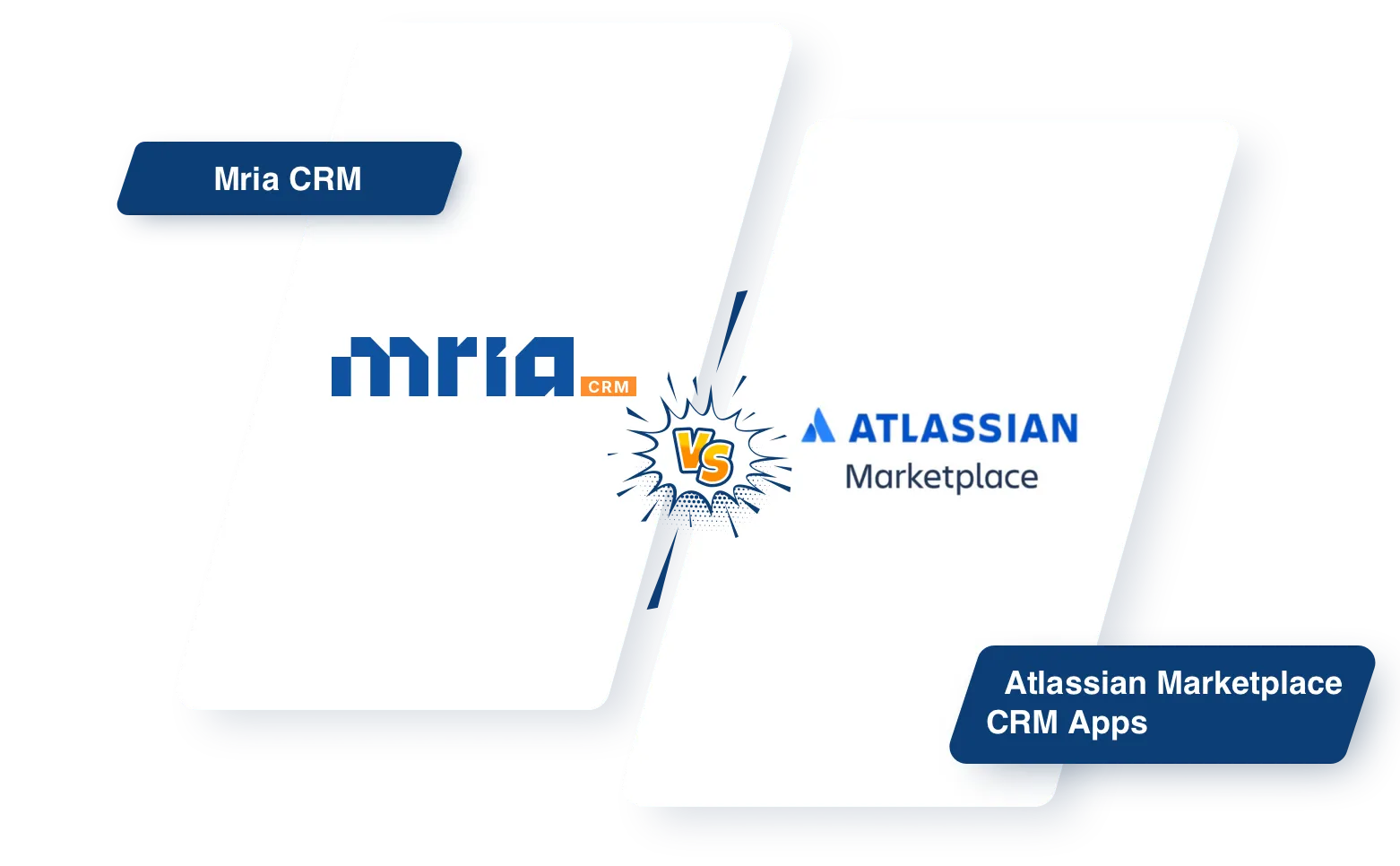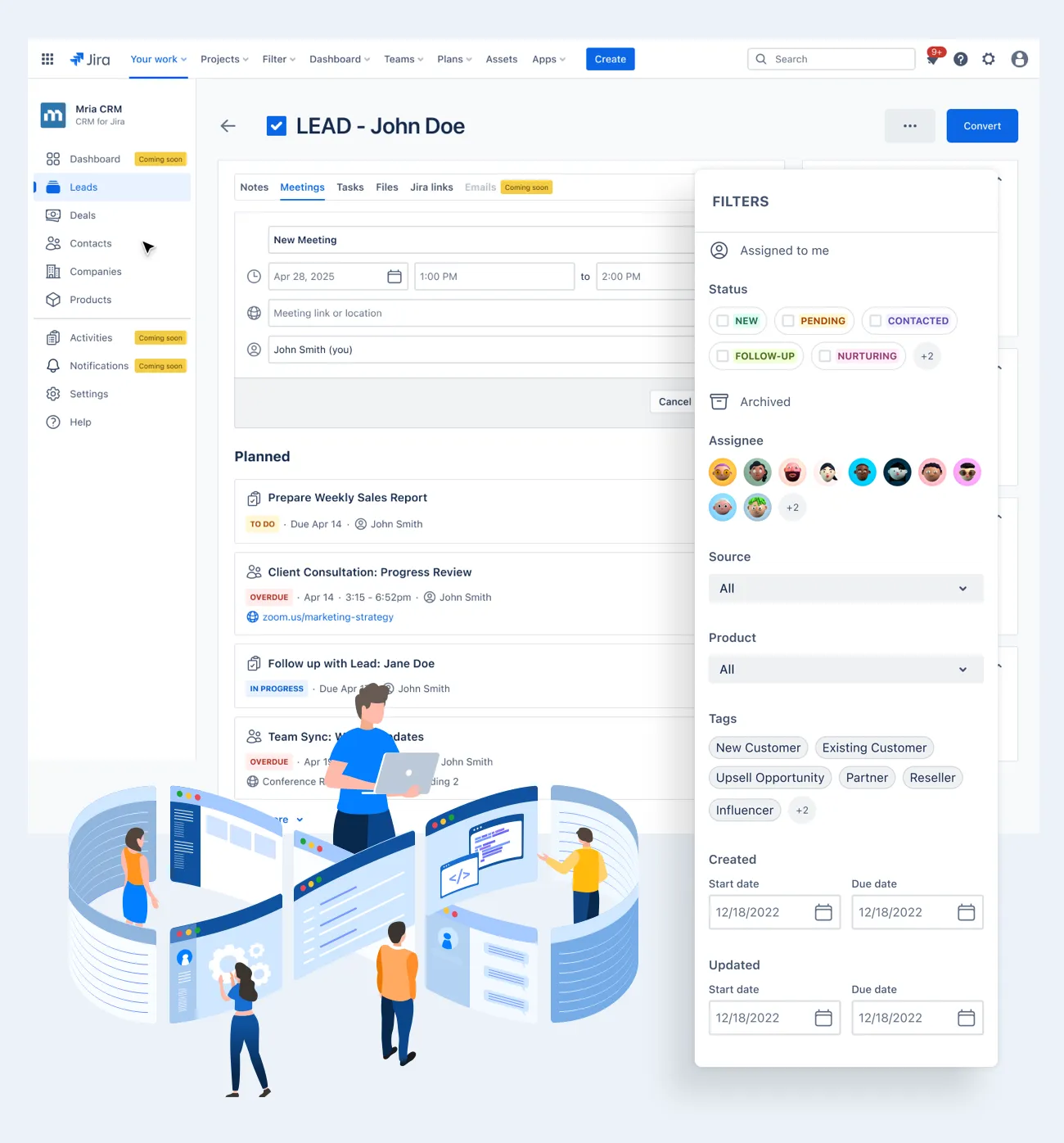compare
Mria CRM vs Atlassian Marketplace “CRM-like” Apps
Compare Mria CRM with Atlassian Marketplace apps like Atlas CRM, Sales CRM, Crmble, and others. Understand the differences in architecture, CRM functionality depth, permissions, and long-term fit for Jira-first teams.

Key Features
Atlassian Marketplace CRMs vs Mria CRM: 3 Key Differences
- Architecture
Many apps are built on older frameworks.
Mria CRM is Forge-built, aligned with Atlassian Cloud’s future and highest security standards.
- CRM Depth
Most offer a limited CRM model with basic contact/sales tracking.
Mria CRM includes leads, contacts, companies, deals, and products fully structured inside Jira.
- Future-Ready
Apps built on legacy frameworks face migration challenges.
Mria CRM is already where Atlassian is going – no rebuild needed.
Why Teams Choose Mria CRM Over Other Marketplace Apps
Go beyond “CRM-like” add-ons. Get a complete, Jira-native CRM that’s future-ready and designed to keep sales, product, and support connected in one Jira-native system.
- True CRM model
Fully structured objects for leads, contacts, companies, deals, and products. - Advanced permissions
Role-based view, edit, and admin rights down to individual CRM objects. - Activities & changelog
Track all interactions, changes, and internal discussions at the lead or deal level. - Unified Jira experience
100% Jira-native UI, no overlays or external-style screens. - Scalable design
Relationship mapping and performance tuned for high data volumes. - Forge-built
Ready for Atlassian’s future, aligned with its cloud security and compliance.

Pros and Cons of Atlassian Marketplace CRM Apps
Some features are there, but long-term flexibility is limited.
What you get
Quick installation from the Atlassian Marketplace
Basic contact and sales management for small teams
Some CRM-related integrations (e.g., Gmail/Outlook)
Lightweight learning curve for simple use cases
What it costs you
Limited CRM model with fewer objects and relationships
Basic permissions with no fine-grained view/edit/admin levels
Non-Jira-native interfaces, breaking user experience flow
Feature ceiling with no clear upgrade path as teams and data grow
Reliance on older frameworks, risking future compatibility
Mria CRM vs Standalone CRMs: Side-by-Side Comparison
This comparison looks at how Salesforce, HubSpot, Pipedrive, Zoho, and similar standalone CRMs stack up against Mria CRM when Jira is your operational core.
| Criteria | Marketplace CRMs | Mria CRM |
|---|---|---|
| Architecture | ||
| CRM Scope | ||
| CRM Data Model | ||
| Relationship Graph | ||
| Jira-Native UI | ||
| Permissions | ||
| Scale Readiness | ||
| Reporting | ||
| Long-Term Fit |
Built for Scale and the Future: No Rebuilds, No Platform Surprises
Mria CRM is the only CRM for Jira built entirely on Forge and ready for your growth and Atlassian’s next chapter.
Marketplace CRMs
- Built on legacy Connect framework, requiring full rebuild to move to Forge
- Risk of feature freezes or migration downtime
- Rigid object structure limits process evolution
Mria CRM
- 100% Forge-built: already on Atlassian’s preferred cloud architecture
- Future-proof for platform updates and security standards
- Flexible, multi-object CRM model that adapts as you grow
Start with Mria CRM: CRM Built for Jira’s Future
Go beyond basic contact tracking – run a complete, scalable CRM inside Jira.